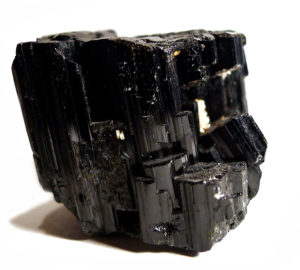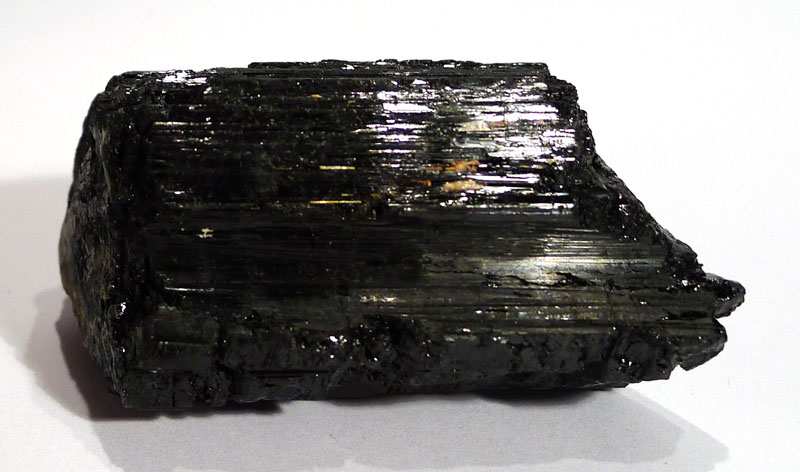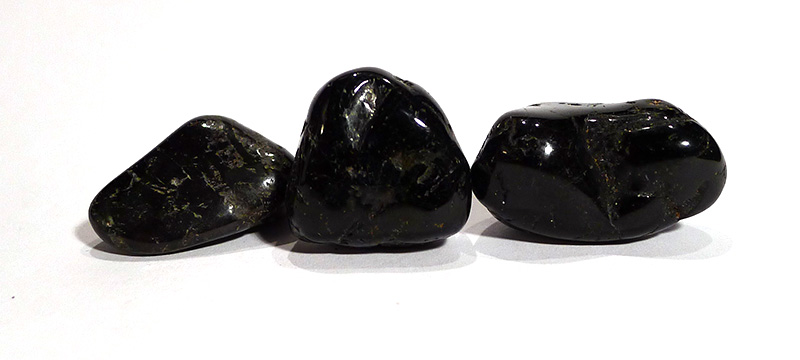Properties:
All tourmalines are powerful healing crystals. Natural tourmaline wands are very directional, and are exceptional tools to direct and guide energy in the practice of crystal therapy. All contain boron and sodium, both of which act as energetic cleansers.
- Black tourmaline (schorl) is one of the best and most frequently used crystals for protection against negative energy and negative intent, as well as being a powerful protection against electromagnetic radiation (EMR). It is extremely grounding, and also discharges tension while encouraging neutrality and a calm approach to difficult situations. It can be used in protection grids in the home or around a property. Place it between you and your computer monitor, or TV. Black tourmaline powder is currently being incorporated into fabric manufacture for this purpose. Black tourmaline eliminates unwanted energy through the feet and into the earth to be revitalised. Black tourmaline contains iron
Attributes:
- Chemical Formula: Na(Fe3)Al6(Si6O18)(BO3)3(OH)3(OH)
- Group: Silicates – cyclosilicates
- Crystal System: Trigonal/hexagonal
- Birthstone: Secondary birthstone for Capricorn
- Chakra: Root
- Element: Earth
Mineralogy:
- Tourmaline is the name for a group of related borosilicates with complex and varied composition. The best crystals are found in pegmatites and metamorphosed limestones which have been in contact with granite magma. Each variety has a slightly different chemical formula. It usually forms long, thin prismatic crystals with a triangular or hexagonal cross-section, frequently coming to a three-pointed termination. Its piezoelectric qualities make it an important mineral in industry, where it is used in pressure devices, such as depth sounding equipment, and in optical devices for polarising light. The general name for the main coloured gemstone variety is elbaite (for the type locality in Elba, Italy). Elbaite displays visible pleochroism (colour changes depending on the direction of view) and strong colour zoning, and may have different colours from one end of the crystal to the other – or, more dramatically, one colour through the centre with an outer coating of an entirely different colour. An example of this latter type is watermelon tourmaline, which has a green outer coating and pink centre. Also common is a black outer coating with a green centre (sometimes referred to as dark green tourmaline).
History and Tradition:
Tourmaline was first reported by Christianus-Fridericus Garmann in 1707. The name “tourmali” was a generic name used in Ceylon (now Sri Lanka) for coloured gems, mostly zircons. Around 1703, it had been discovered by Dutch lapidaries that some of the ‘zircons’ arriving in the Netherlands were actually a previously undescribed mineral. Several names were given to the new mineral, including “Pierre de Ceylan”, used by Lemery in 1717. “Tourmalin”, as a more or less specific mineral name, was used by Rinmann in 1766. Hill called it “Tourmaline Garnet” in 1771; and Richard Kirwan shortened the name to “Tourmaline” in 1794. Information from MinDat
- Up until the 18th century, tourmaline remained unidentified, and was usually confused with other minerals, such as emerald. As a result, much of the lore associated with it also applies to other crystals. However, Theophrastus (c. 371 – c. 287 BC) described a mineral with zoned colouration, which he believed was showing a transition from jasper to emerald – and this was almost certainly tourmaline. The 15th century English story Reynard the Fox (derived from the 11th century Roman de Reynard by John Caxton), describes a ring set with a medicinal stone of three colours, each of which had different properties: red had the qualities ascribed to ruby – the inner fire that brings light into dark places; white was used to treat headaches and eye diseases (this was achieved by stroking the affected area with the stone, or using it to make what we would now refer to as a gem essence); and the green brought love, friendship, and victory in battle. The stone was most likely colour-zoned elbaite tourmaline. According to Bruce G. Knuth, in his book Gems in Myth Legend and Lore, African and Native American tribes, along with some Australian aboriginal groups, use tourmaline as a talisman to protect against all dangers.

Save


